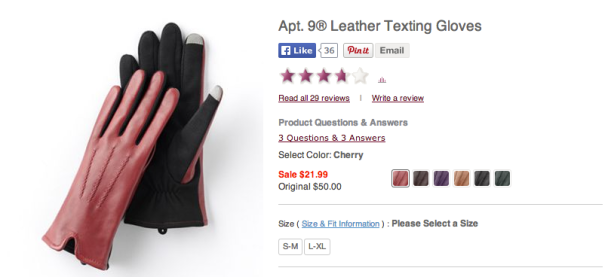
English Major Grace Snyder shares her experience on the #adbowl’s second screen.
The Super Bowl is not only the biggest football game of the year, it is also the biggest day for company advertising. Companies pay top dollar to have their ads played during commercial breaks. Usually these commercials are funny but some years advertisers seem to drop the ball.
In my opinion, this Super Bowl was boring, not only because of the shutout by the Seahawks but also because of the mediocre commercials. There were only a few that I considered memorable.
Due to the lack of excitement, I was glued to my phone and my favorite app, Twitter. While browsing through my Twitter feed, I saw a promoted ad from JC Penney. They seemed to be tweeting numerous typos and were gaining a lot of attention from the misspelled tweets. I was intrigued so I clicked on their Twitter to check it out.
It turns out they were misspelling words on purpose to promote their new mittens. They called it “mitten tweeting.” Basically, the cause of the grammatical errors was because the person typing had on said mittens.
I thought the concept was clever. That is until I saw a genius response from a competing company, Kohl’s. The Kohl’s Twitter account responded to the mitten tweets with a jab that, in my opinion, takes the cake for Super Bowl ads. They suggest that JC Penney try Kohl’s leather texting gloves when tweeting next time. JC Penney got served.
 I was so amused by their response. Kohl’s took advantage of an amazing opportunity to not only show up JC Penney, but they also promoted their own product. In my sheer amazement, I replied to Kohl’s brilliant comeback telling them I could not stop laughing. Then, to my surprise, the Kohl’s account responded to my tweet.
I was so amused by their response. Kohl’s took advantage of an amazing opportunity to not only show up JC Penney, but they also promoted their own product. In my sheer amazement, I replied to Kohl’s brilliant comeback telling them I could not stop laughing. Then, to my surprise, the Kohl’s account responded to my tweet.
I was very excited to have received a response from the clever company. Not only did Kohl’s make a hilarious social media comeback, they showed their appreciation for my feedback. Kohl’s is a great example of how companies can take advantage of social media advertising. In addition, they show that engaging with other companies can not only be beneficial, it can also be comical.
Looking back at all of the advertisements last night, Kohl’s response to JC Penney is the moment that stuck with me. I name Kohl’s the winner of the “#AdBowl.”



